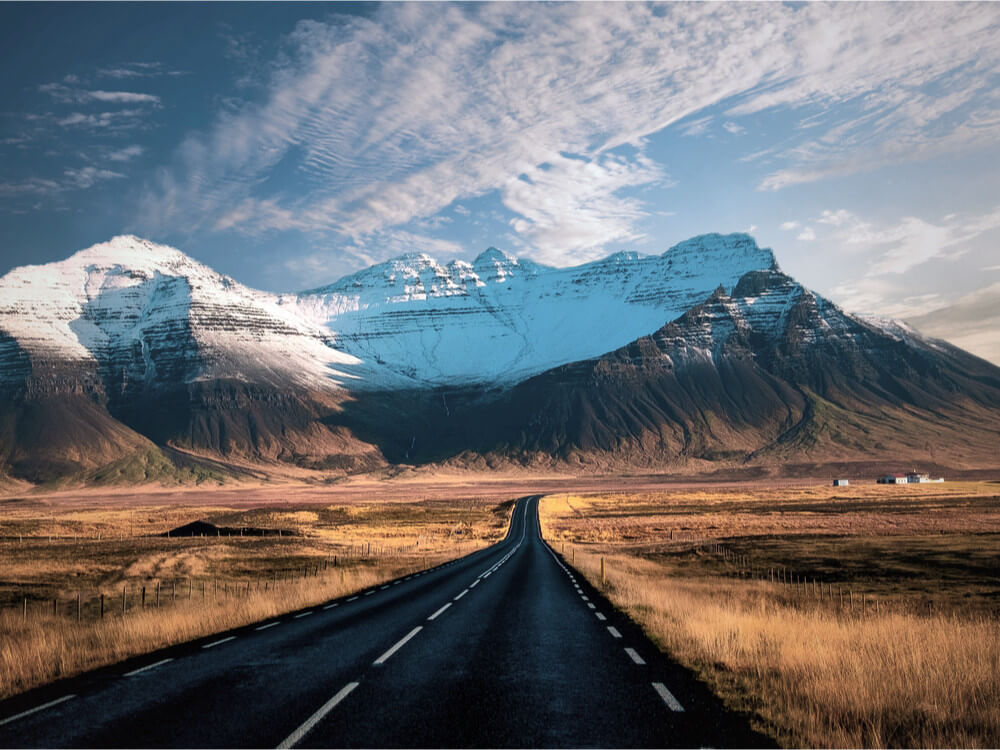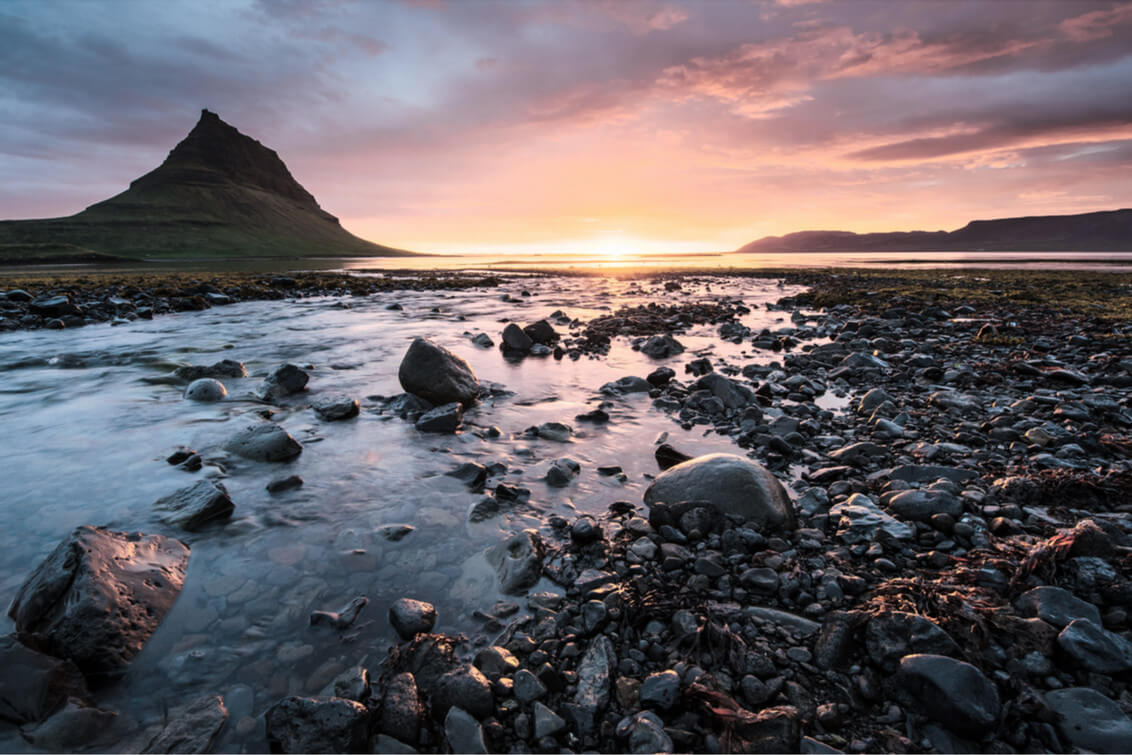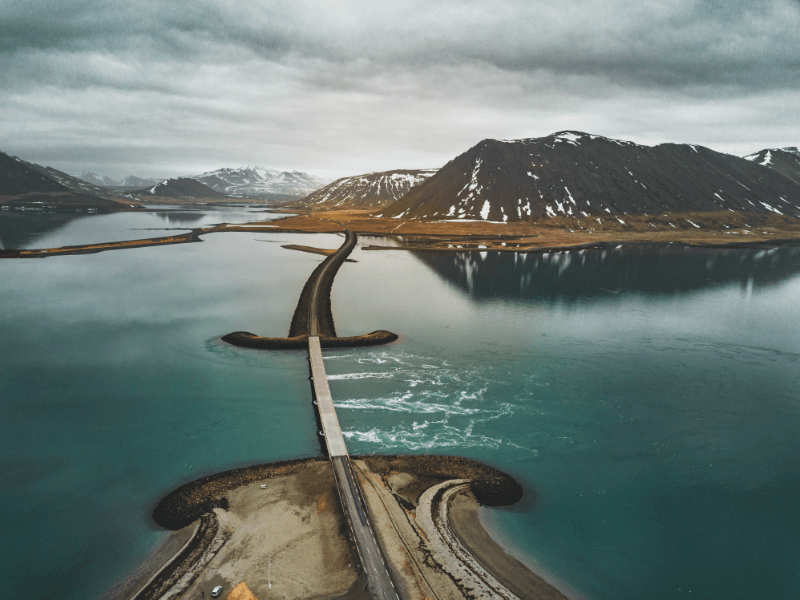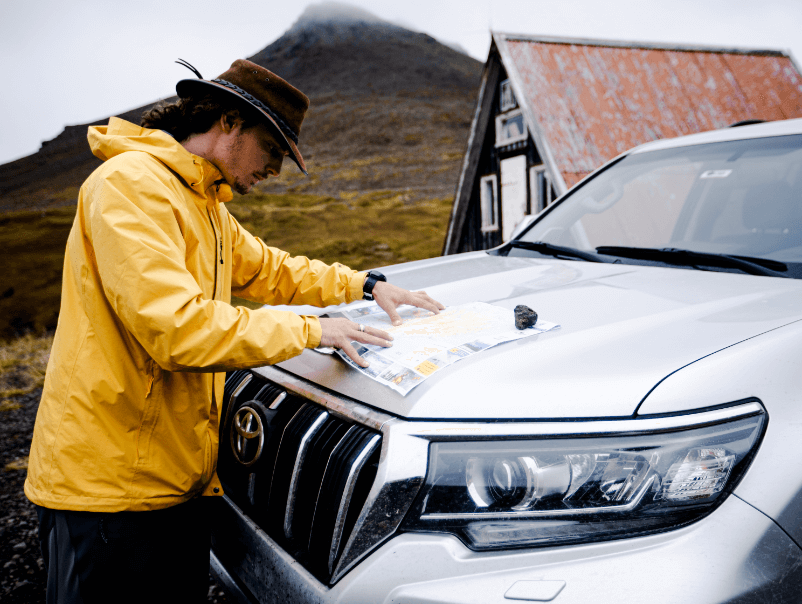Driving in Iceland in October is possible, but it’s not simple. You’re hitting that in-between season. Not full winter, not quite autumn either. The weather is all over the place. Roads can be fine one hour, then covered in ice the next.
Still, if you plan properly and drive the right camper, October gives you a quieter, cheaper, and more scenic trip. Less traffic. More space. And yes, the views are worth it.
This guide covers what actually matters. Weather, road tips, gear, and which campers can handle the cold. Nothing fancy. Just what you need to know before getting behind the wheel.
Weather in Iceland in October
Thinking of taking a road trip? Good. Just don’t show up thinking October in Iceland is ‘fall weather.’ It’s not. It’s wet, cold, and completely unpredictable. But if you visit Iceland in October with your eyes open, it’s 100% doable. Here’s what to actually expect:
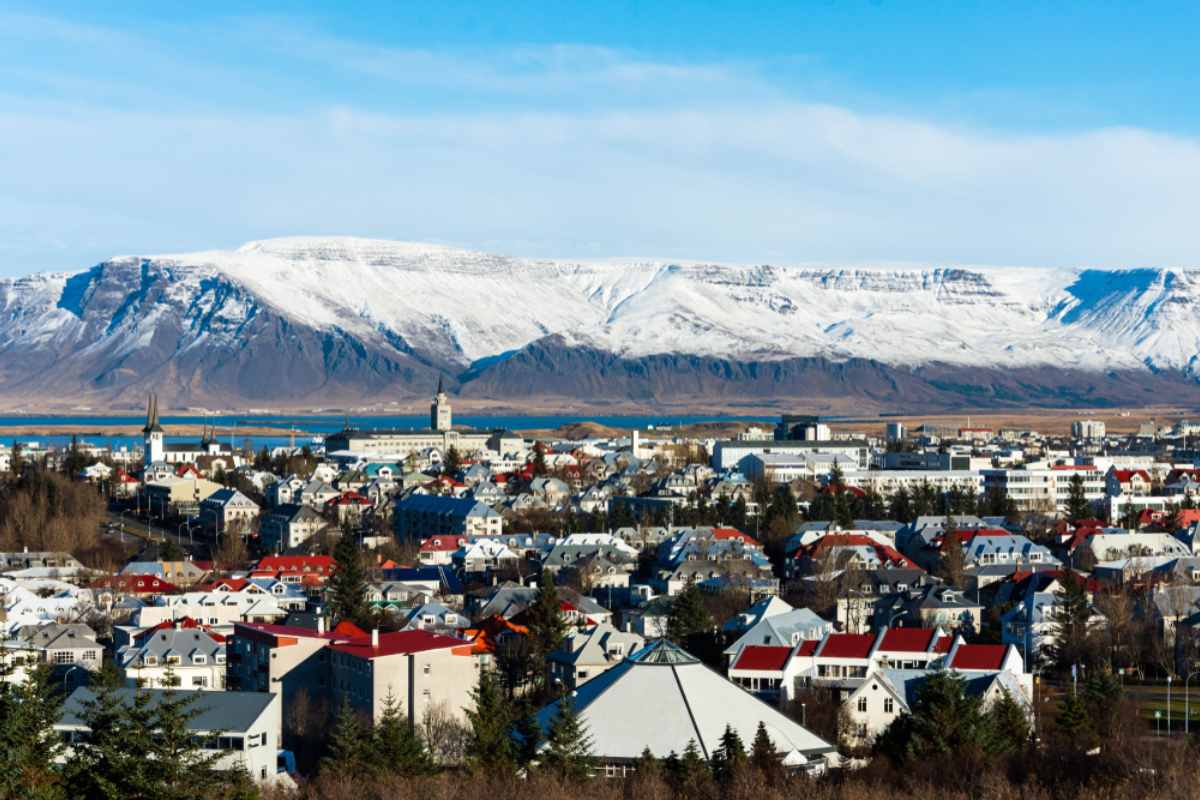
- Reykjavik stays around 2°C to 7°C (36°F to 45°F). Not warm, not deadly. Just damp and chilly.
- Once you head inland or north, it gets colder fast. Some mornings? Closer to 0°C (32°F).
- Nights drop below freezing, especially in the Highlands. You’ll feel it in your toes.
- Rain? Constant. October doesn’t hold back.
- Snow starts teasing mid-month, especially in higher or northern areas.
- Wind shows up uninvited and can ruin hikes or shake your camper.
- Daylight drops fast. Early October gives you 11 to 12 hours. By the end of the month, you're lucky to get 8.
- Roads can go from wet to icy without warning.
- Some mountain passes and Highland routes close for the season.
- Best move? Stay flexible. Iceland doesn’t care about your plan.
Driving in Iceland in October
Driving conditions in Iceland in October are no joke. The Ring Road usually stays open in October. Still, that doesn’t mean you’re in the clear regarding road conditions. Up north and out east, the weather can flip in minutes. One minute it's dry, the next it's icy, windy, and sketchy. Want a safe trip? Read this, and plan like a local:
- The Ring Road is open, but expect icy patches, especially on bridges and mountain passes.
- F-roads are done for the year and officially closed to all traffic.
- Morning frost is sneaky, and rain makes things slick. Fallen leaves don’t make things better either.
- Wind will test your grip along exposed coastal sections. We suggest you keep both hands on the wheel at all times.
- Headlights aren’t optional, so keep them on, even during the day. It is the law after all.
- Slow down. That ‘safe distance’ rule isn’t just a suggestion.
- Forget surprise detours. Stick to planned, open routes.
- Plan around campsites still open in October. Some close early. We’ve listed the best open-year-round campsites in our blog.
- Keep your car headlights on and follow the speed limits: 90 km/h on paved roads, 70 km/h in tunnels, and 50 km/h in towns. And remember to watch out for one-lane bridges, the vehicle closest has priority.
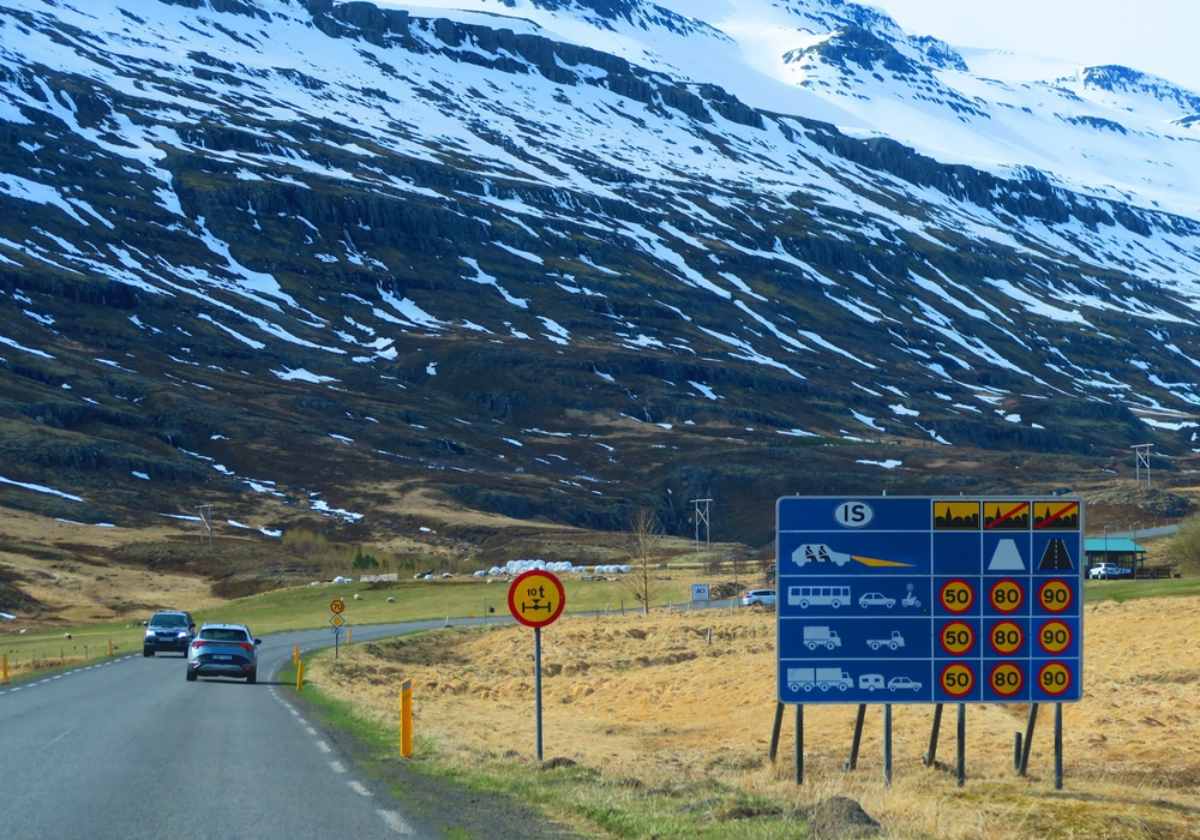
What to Know Before You Hit the Road
A trip to Iceland in October only works if you’re prepared. Once you’re outside the city, it’s just you, your camper, and a whole lot of nature. There’s no room for guesswork out here. Lock in the basics before you turn the ignition:
- Umferdin.is shows live road updates, including closures, icy patches, and alerts. Check it every morning and before long drives.
- Safetravel.is lets you share your location with Icelandic emergency services and receive real-time safety warnings. Use it like a travel buddy that actually knows what it's doing.
- Vedur.is is the official weather site. It covers forecasts by region and warns about wind, snow, or incoming storms. Check by route, not just city.
- Offline navigation is essential. Google Maps and Maps.me both let you download regions. Once you leave populated areas, mobile signal often disappears.
- Keep a paper map in your glovebox. If your phone dies or glitches, you won’t be guessing where to turn next.
- Tjalda.is lists all official campsites. Filter by month to find ones that are open in October and avoid showing up at a locked gate.
- 112 is Iceland’s emergency number. Save it. It works for ambulance, fire, rescue, and police.
- Don’t forget about winter tires. This extra is essential for safe driving during the winter months in Iceland and, luckily for you, they’re included with all our campervans.
- Be prepared for a few days of interruption on your road trip. Plan for at least 10 days if you’re doing the full Ring Road. Bad weather can delay you, and trying to rush it in 7 days is a recipe for stress. Build in a buffer day or two, you’ll be glad you did.
What Not to Do When Driving in Iceland in October
Traveling around Iceland in October can be magical, but it also comes with unique challenges. Here’s a quick guide to the common mistakes travelers make, and the safer alternatives you should follow instead.
|
Don’t Do’s |
Reliable Alternatives |
|
Don’t rely only on Google Maps for road openings. |
Always check Umferdin for real-time road conditions and closures. |
|
Don’t drive through F-roads (closed), flooded roads or icy mountain passes. |
Take detours or wait it out; safety is more important than speed. |
|
Don’t sleep in unheated rooftop tents. |
Choose a heated campervan or stay at a campsite with indoor facilities. |
|
Don’t underestimate wind warnings; campers can tip. |
Park safely, delay your trip, and follow Vedur weather alerts. |
|
Don’t assume gas stations are everywhere, fuel up early. |
Refuel whenever you can, especially in remote areas. |
|
Don’t leave Reykjavík without checking weather and road alerts. |
Always review the latest weather and road updates before starting your trip. |
Best Type of Campervan for October Travel
Driving in Iceland in October means choosing gear that actually works when it’s wet, cold, and windy. All of our campers are built for the job. They’re well-insulated, state-of-the-art, and heated for real Icelandic conditions. Here’s what to look for:
- Insulation is key. Our vans are lined with proper thermal materials that hold heat and fight moisture.
- EHU heating systems work great at campsites. Plug in and stay toasty.
- Dual heating setups give you more freedom. These vans can heat off-grid or when connected.
- Battery-powered heating systems work without campsite power. Perfect for remote overnight stops.
- Rooftop tents? Hard pass. No insulation. No comfort. Way too exposed for October.
- Compact campers handle better. Less wind drag means safer driving in rough weather.
- Group size decides your layout. Couples can go small. Families need more space and real heating.
- Consider the terrain conditions before booking. While a 2WD camper can work on the Ring Road, a 4x4 gives you extra grip, clearance, and peace of mind; especially if you're heading north or east where road conditions can turn on a dime.
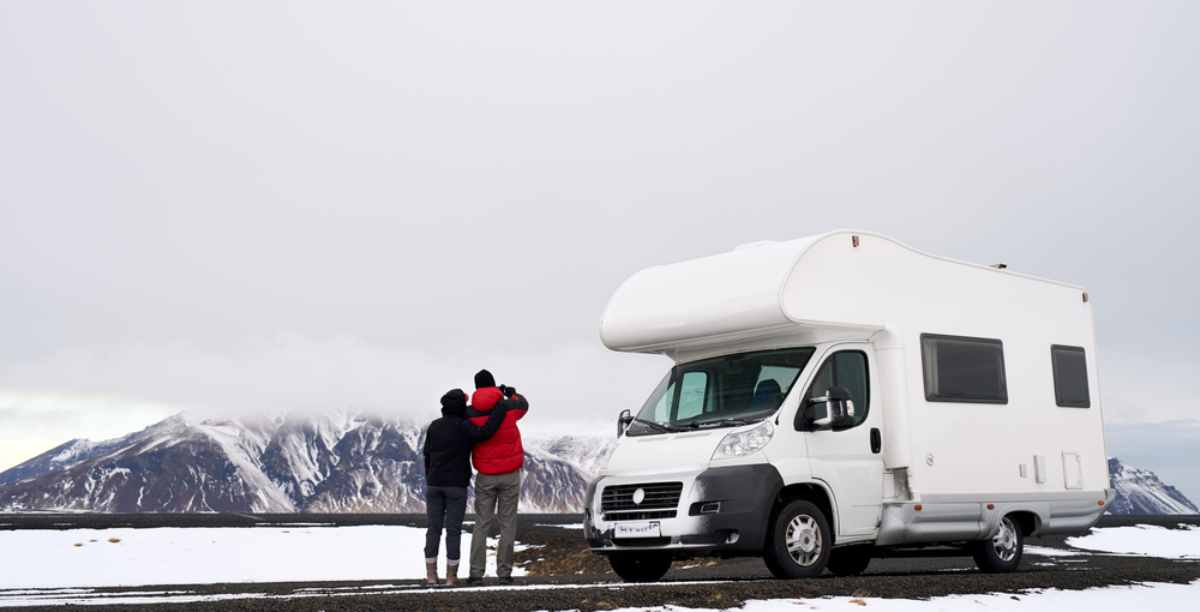
Top Cheap Rental Campervans in Iceland for October
Not all campervans are created equal, especially when you plan on cruising around Iceland in October. Some are built for it. Others are... better left for July. Below are five picks from our fleet that actually get the job done without draining your wallet or your patience.
1. Campervan Play Max + (automatic)
This one’s an all-rounder of the campervan world. Not too big, not too bare. With dual heating and a compact build, it’s ideal for couples who want to stay warm and mobile without leveling up to a house on wheels.
You can plug in at a campsite or sleep off-grid without freezing your toes off. The layout is cozy, smart, and has everything you need to stay fed, dry, and rested. If you like comfort but can live without a walk-in closet, this is your van. Don’t let the ‘+’ fool you. It’s not a marketing gimmick. It’s actually better than the regular one.
2. Campervan Fun ECO (manual)
Budget travel in Iceland doesn’t mean suffering. The Fun ECO keeps it simple, affordable, and surprisingly warm. It seats and sleeps up to three, so it’s a solid choice for two friends or a couple plus one. Heating is included, so you're not waking up in a frozen fog.
There’s a cooking setup, basic insulation, and enough space to be functional without wasting fuel on dead weight. If you don’t need luxury, but you also don’t want to camp like a Viking, this one’s your sweet spot. It’s cheap, cheerful, and gets the Ring Road job done.
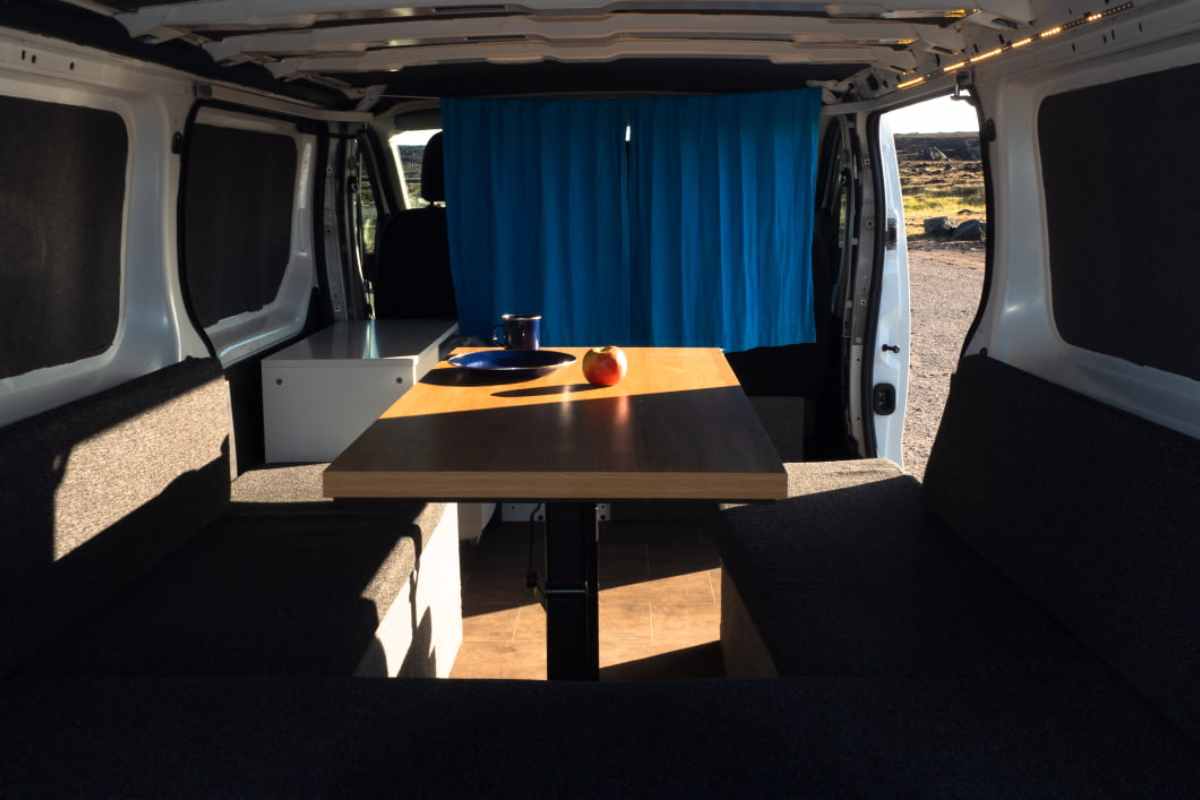
3. Campervan 4x4 Hilux (manual)
This beast isn’t for everyone. But if you know how to handle yourself behind the wheel and want to go where most tourists tap out, the Hilux is your ticket. It’s got 4x4 power, high clearance, and a heated sleeping setup that lets you camp in colder spots with confidence.
You’ll also get a full kitchen and plenty of room to stretch out. It’s not about luxury, it’s about freedom. If you’re the kind of traveler who doesn’t ask if the road is bumpy but how bumpy, this one’s for you. Just don’t complain if it makes you feel cooler than you are.
4. Campervan XL (manual)
If you’re rolling deep with the whole crew, the XL doesn’t mess around. It seats and sleeps up to five, which is about as good as it gets without jumping into motorhome territory. Heating is built in.
The layout is practical. And despite the size, it doesn’t guzzle fuel like you’d expect. It’s the perfect fit for families or groups who want to stay together, warm, and mobile in one vehicle. It’s not sleek or minimal. It’s roomy, ready, and fully winter-proofed. In October, that matters more than Bluetooth speakers and mood lighting.
5. Campervan Play (manual)
If your plan is to circle Iceland without spending half your budget on your ride, this is the one. It’s the no-frills favorite for couples. You get a warm place to sleep, a cooking setup, and everything you need to make your trip comfortable without overcomplicating it.
The automatic heating system works like a charm, the van is easy to handle, and it doesn’t feel like you’re driving a spaceship. It’s not fancy. It’s functional. And when you’re chasing waterfalls in the rain and just want a hot meal and a warm bed, that’s exactly what you’ll want.
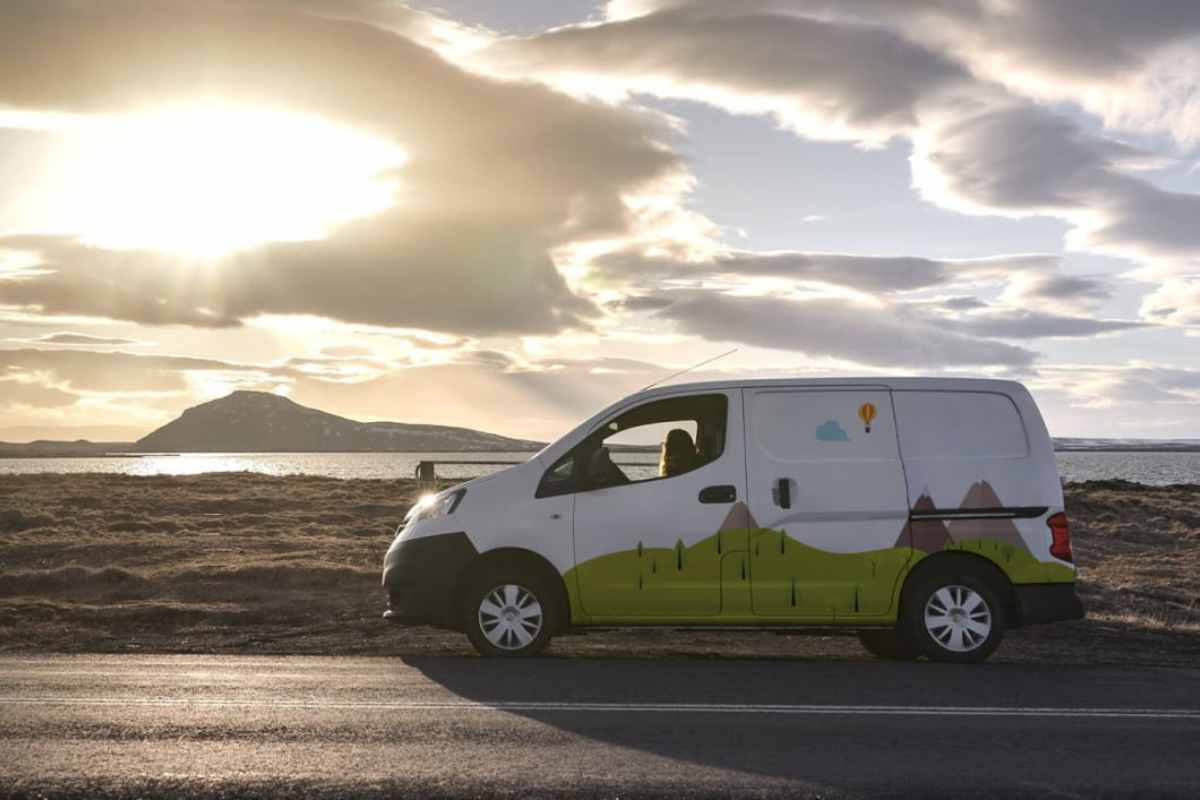
What Insurance Do You Really Need for Driving in Iceland in October?
Let’s be real. Driving in Iceland in October isn’t a spa weekend. There’s rain, wind, gravel, and sometimes a little volcanic ash in the mix. If you want peace of mind, don’t skimp on insurance.
Here’s what’s included:
- CDW & Theft Protection. It’s free with every rental. But the deductible is 350,000 ISK. That’s not a typo.
Here’s what we actually recommend:
- SCDW. Cuts your deductible to 50,000 ISK. Much smarter.
- Gravel Protection. You’ll need this. Chips and cracks happen fast on Iceland’s lovely ‘paved’ roads. Deductible? Zero.
- Sand and Ash Protection. Dry spells + wind = ruined paint. This one’s essential in the south and east.
Want to keep it simple?
- Go with Premium. It bundles everything above at a better price.
- Want zero drama at all? Zero Risk is your best friend. It drops your deductible to 0 and covers everything we offer.
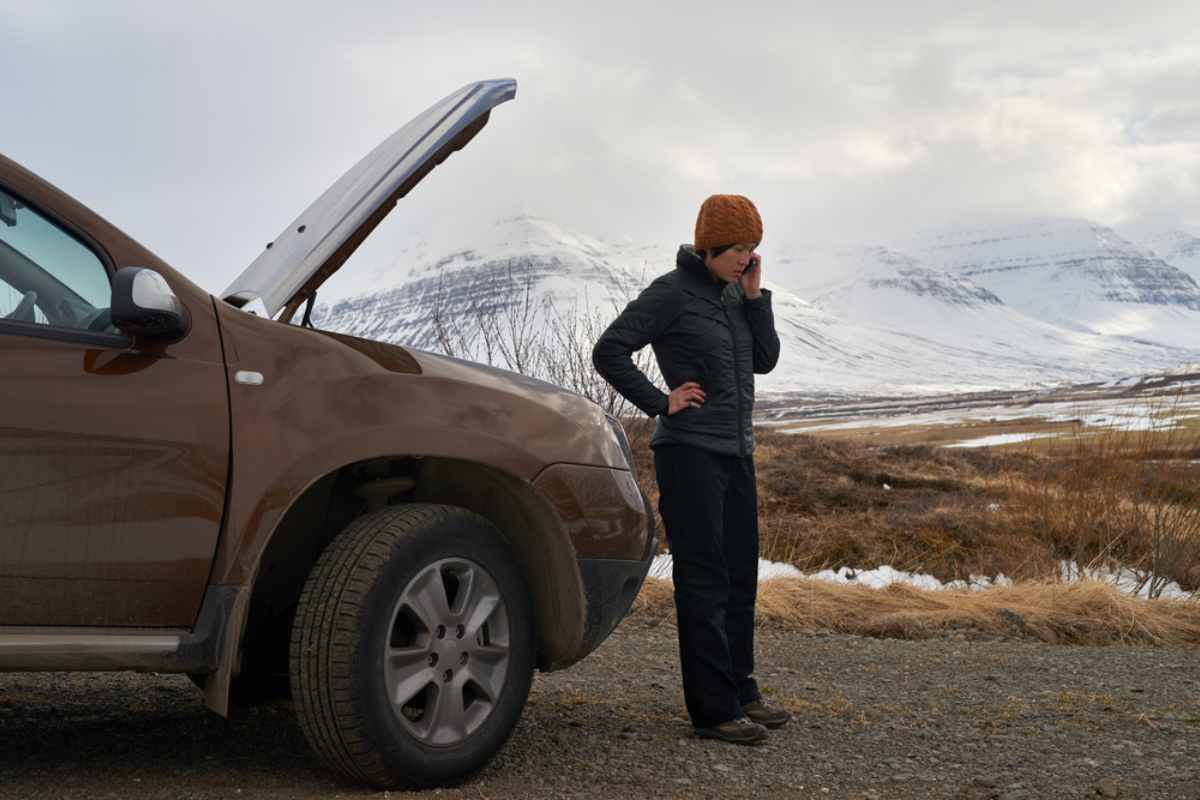
FAQs About Coming to Iceland in October
Do you need a 4x4 in Iceland in October?
Not unless you’re heading off the Ring Road. Most routes stay open, and a well-equipped 2WD camper is usually enough. Just make sure it has heating and winter tires.
Is it a good time to go to Iceland in October?
Yes, if you’re ready for cold, rain, and moody weather. Fewer tourists, lower prices, and epic fall views make it worth it. Just don’t expect sunshine and sandals.
How many days should I plan for the Ring Road in October?
At least 10 days. October weather can be unpredictable, with road closures and sudden storms. Building in extra days gives you flexibility if something delays your plans.
How likely am I to see the northern lights in Iceland in October?
Pretty likely. October has dark nights and increasing aurora activity. Expect sunset between 5:00 PM and 7:00 PM depending on when in the month you visit. You’ll need clear skies, a good forecast, and a bit of luck, but the odds are in your favor.
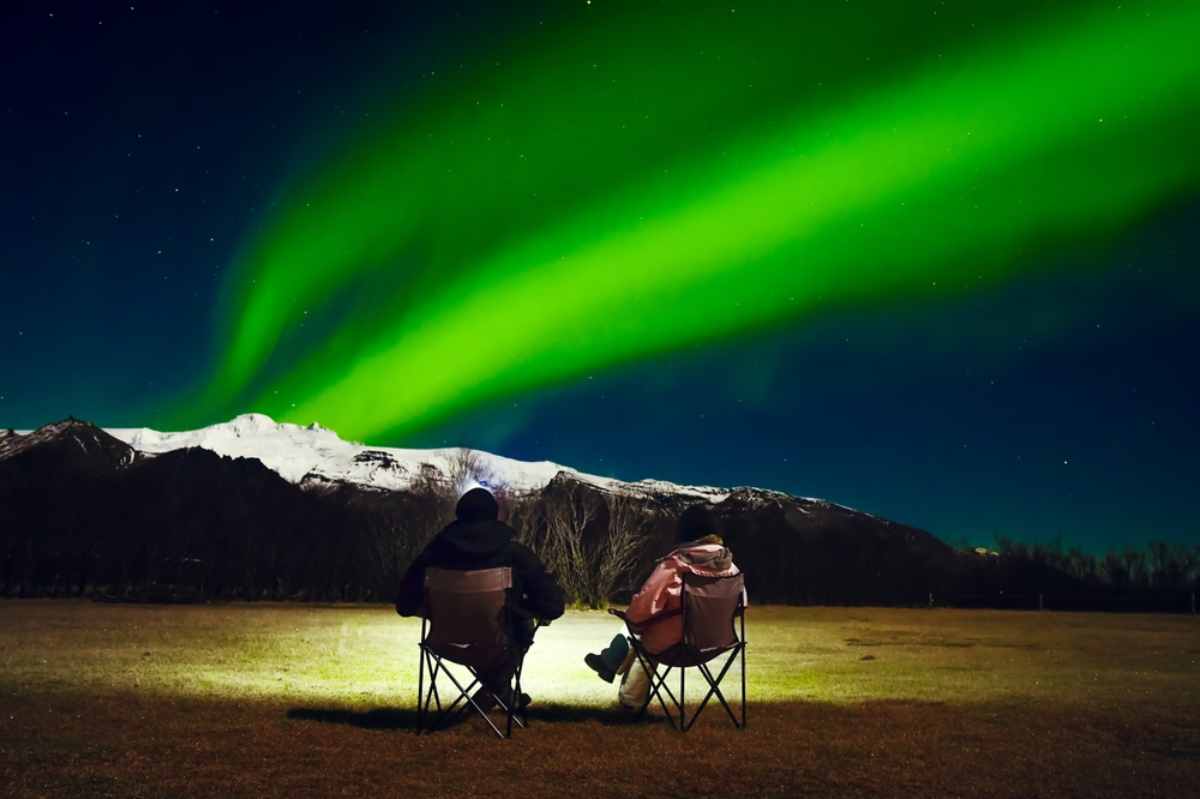
What clothes to take to Iceland in October?
Think layers. Bring a waterproof jacket, thermal base layers, gloves, a beanie, and durable boots. Skip the fashion show. This is survival gear, not streetwear.
Is it safe to drive in Iceland in October?
Yes, if you drive smart. Roads can be wet, icy, and windy, but they’re manageable with caution.
Survive and Thrive While Driving in Iceland in October
Driving in Iceland in October? Bold move. Good one too. Fewer crowds, cheaper rates, more space to breathe. A camper makes it all work. You get a warm bed, a private space, and full control of your route.
Ours come ready. Winter tires? Free. Heating? Of course. Fuel discounts? Yep. You just bring the snacks. Not sure which van to go with? Pick the one that doesn’t overcomplicate your life. Browse the fleet and book your campervan in Iceland here.
Still have questions? Fire away. We actually reply.



 By
By 

